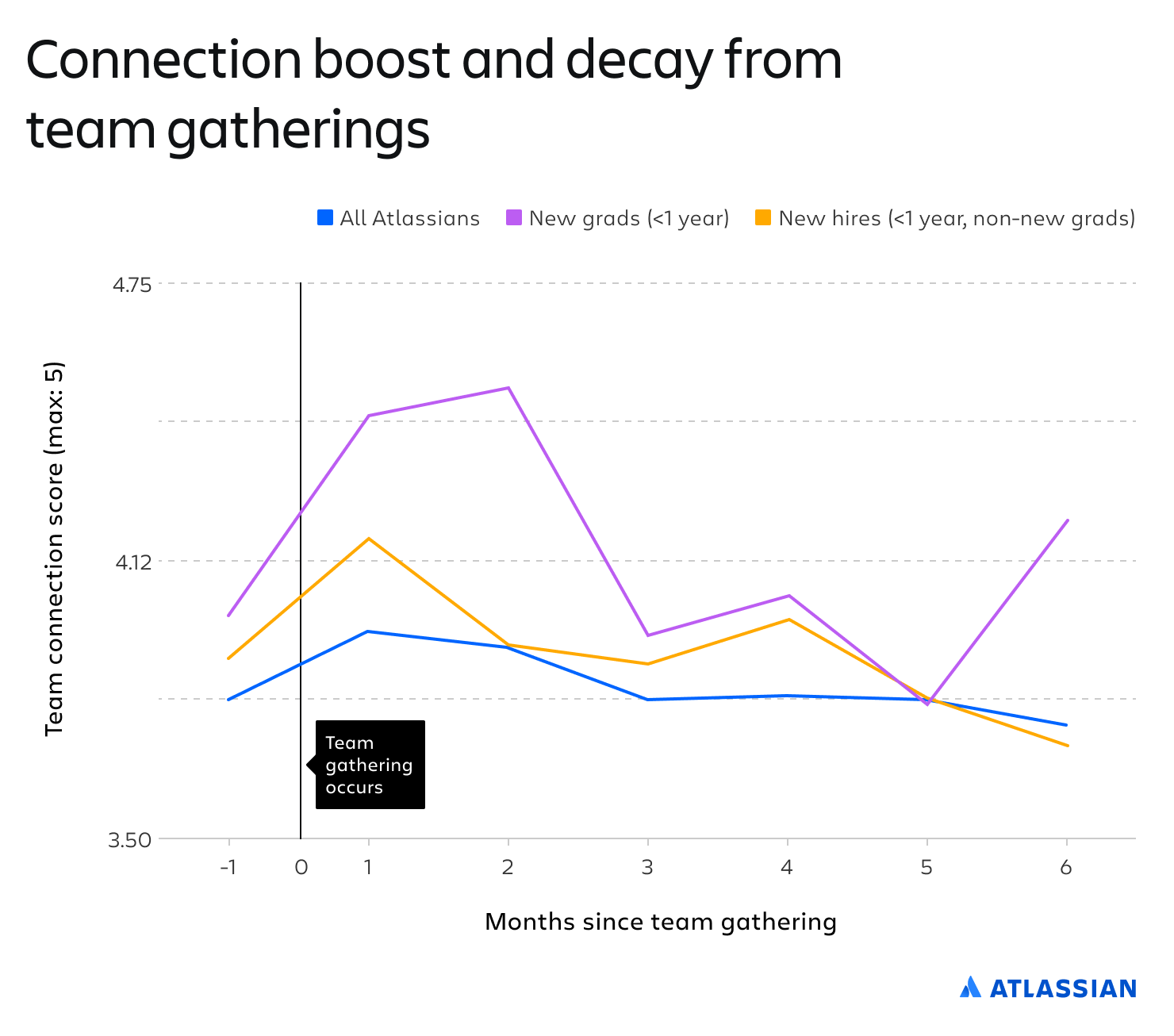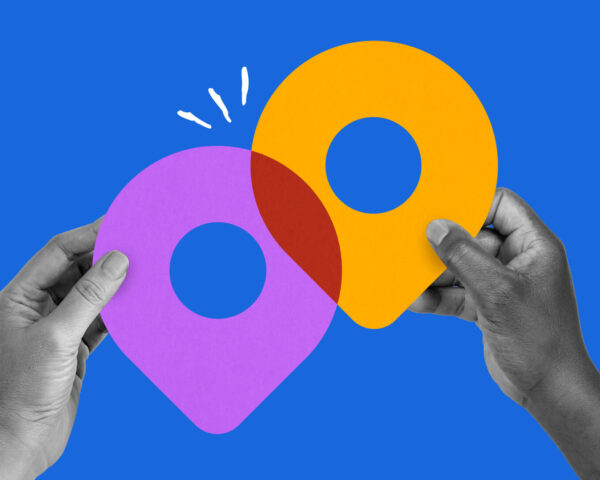Office attendance doesn’t drive team connection. So what does?
Most teams no longer sit shoulder-to-shoulder, even if individual members go into their closest office every day.
- In our survey of Fortune 500 executives, every single leader shared that most employees no longer work from the same office as their team members.
- Industry research shows that only 19% of teams work in the same office.
- At Microsoft, the percentage of co-located teams dropped from 61% pre-pandemic to just 25% today.
When teams are not co-located, you need to be much more intentional about bringing them together. At Atlassian, we aim to have teams meet in-person at one of our offices a few times per year, and we prioritize building relationships and advancing mission-critical work during that time.
These team gatherings are part of our Intentional Team Gathering (ITG) program. Since we launched the ITG program in August 2022, we’ve hosted over 1,600 team gatherings with an average of 16 attendees each. And they have earned a 96% satisfaction rating from participants!
But do these types of intentional events really boost connection, and by how much?
To answer this question, Atlassian’s Team Anywhere Lab, an internal group of dedicated behavioral scientists, took a closer look at just how effective our approach has been.
Our data shows that bringing teams together in person to bond and advance key projects:
- boosts team connection more than sporadic office attendance
- is especially effective for new hires and new grads
- makes teams feel better about their productivity, communication, and effectiveness
Intentional in-person gatherings boost team connection more than sporadic office attendance
Our ITG events take place at one of our 11 global offices and are 3-5 days long. Managers are encouraged to prioritize forging relationships by making time to socialize, participate in team-building activities, and collaborate on important projects.
To support these gatherings, we’ve redesigned our offices to offer large groups more open, flexible spaces and ensure that out-of-town visitors have ample storage for their luggage. When we discovered that a full 50% of our NYC office visitors were coming in from out of town to get together with their teams, we converted desk space into a 65-person ITG destination. In other words, we go to great lengths to ensure that our spaces meet the needs of the Atlassians spending time in them.
To track the effectiveness of these events, we conducted surveys the month before and after team members attended a team gathering. Participants rated a series of statements on a scale from 1 (“strongly disagree”) to 5 (“strongly agree”) including the following:
- I felt a strong sense of connectedness in my team. (Team connection in the chart below)
- I could see a clear link between my work and my team’s objectives. (Individual-team alignment)
- My team took enough time to develop new ideas. (Enough time to develop ideas)
Our data show that these events had a statistically significant impact on important elements of collaboration.

Team gatherings had the largest impact on team connection, with boosts averaging 27%. Average team connection scores returned to where they were pre-ITG about four months after the event. We call this “connection decay,” and it indicates that the optimal frequency for getting together in person is every four months, or roughly three times per year.

Intentional team gatherings are especially effective for new hires and new graduates
New hires, which we define as Atlassians who joined the company less than a year ago, experience a larger bump in team connection after a gathering than the average employee. And new graduates, defined as Atlassians who graduated from university less than a year ago, experience the biggest bump. A full 96% of new graduates agree that they feel connected to their teams in the month following a team gathering, up from 74% in the month prior. And even two months after a team gathering, new graduates rate their feelings of team connection at 4.61, nearly the maximum rating of 5.

These findings make sense intuitively: if you’re new to an organization or the workforce in general, you may disproportionately benefit from getting that extra time with people to build new relationships. However, our data show that new hires and new graduates do not need to meet in person more frequently than other populations. Feelings of team connection within these two groups returned to pre-gathering levels around the same timeframe, suggesting that meeting roughly three times per year is enough to keep feelings of team connection relatively high.
Higher team connection helps teams feel better about their productivity, communication, and collaboration
We also looked at how team connection impacts Atlassians’ perceptions of productivity, communication, and team effectiveness. To do this, we relied on employee engagement surveys that participants filled out in which they agreed or disagreed with statements like:
- I regularly reach a high level of productivity.
- The decisions that affect my work are made quickly and effectively.
- My team collaborates effectively to get work done.
Our internal data show that team connection drives up productivity. Since we know that team gatherings boost team connection, we can determine that these events also indirectly improve feelings about productivity, communication, and collaboration.

At Atlassian, we know that in-person time matters for connection, but we’re also finding that teams members don’t need to be physically together every day to feel close to one another.












































